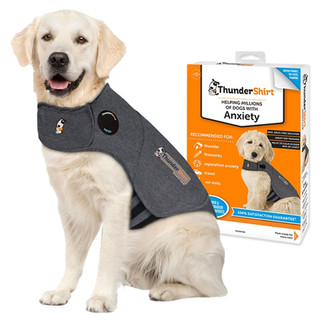How to Help Your Dog With Separation Anxiety
- M.Pedersen
- Feb 7
- 3 min read
Ever walked through the door and found your house looking like a crime scene? Chewed-up furniture, shredded pillows, a dog acting like you abandoned them for years even though you were just gone for 10 minutes? Yeah, that’s separation anxiety. And it’s a nightmare for both you and your dog.
But here’s the good news: You can fix it. It takes time, patience, and the right approach, but it’s absolutely doable. Let’s break it down.

Step 1: Know the Signs
Some dogs make it very obvious they have separation anxiety. Think barking nonstop, pacing, or trying to dig their way through the door like in The Shining. Others are more subtle, showing signs like excessive drooling, panting, or even refusing to eat when alone.
If your dog does any of the following, separation anxiety might be the culprit:
✅ Destructive chewing or scratching (especially near doors and windows)
✅ Constant whining, barking, or howling when left alone
✅ Pacing or restlessness before you leave
✅ Attempts to escape crates, rooms, or even the house itself
✅ Peeing or pooping inside even though they’re potty trained
Step 2: Understand Why It’s Happening
Dogs don’t destroy your house just to ruin your life (even though it may feel that way).
Anxiety often comes from:
Sudden changes – New work schedule? Moved houses? Even a small change in routine can set some dogs off.
Past trauma – Rescue dogs, I’m looking at you. A history of abandonment can make being alone terrifying.
Lack of training – If a dog has never learned to be alone, they’re not magically going to be okay with it.
Step 3: Fix It (A.K.A. Get Your Dog to Chill Out)
Helping your dog handle alone time takes consistency, patience, and the right techniques. Here’s what actually works:
The Gradual Goodbye Method
Don’t just suddenly vanish and expect your dog to be okay. Start small:
1️⃣ Leave the room for 30 seconds → Come back like nothing happened.
2️⃣ Increase to 1-2 minutes → Ignore them when you return.
3️⃣ Keep increasing time in small steps until your dog is comfortable being alone for longer stretches.
No dramatic goodbyes, no guilt trips. Act like leaving is no big deal, and your dog will start to believe it too.
Make Alone Time AWESOME
If your dog thinks being alone is the worst thing ever, flip the script:
✔ Food puzzles & treat dispensers – Stuff a Kong with peanut butter and freeze it. Instant distraction.
✔ Calming aids – Try pheromone diffuses (like Adaptil), anxiety wraps (like ThunderShirts), or calming music.
✔ Leave something that smells like you – An unwashed shirt (gross, but effective) can help keep them calm.
Burn Off That Excess Energy
A tired dog is a calm dog. Before leaving, make sure your dog gets:
🐕 A long walk or play session
🧠 Some mental stimulation (like obedience training or a snuffle mat)
The more energy they burn, the less they’ll have to freak out when you leave.
Step 4: When to Call in the Pros
If your dog’s anxiety is extreme, as in they’re injuring themselves or trying to escape, it’s time to bring in reinforcements. A professional trainer or behaviourist can create a custom plan, and in severe cases, a vet might recommend anxiety medication.
Final Thoughts: Your Dog Can Learn to Be Alone
Separation anxiety isn’t an overnight fix, but with patience, training, and the right tools, your dog will get better. Start with small steps, keep departures low-key, and make alone time something they actually enjoy.
And remember, chewed-up furniture can be replaced.






Comments